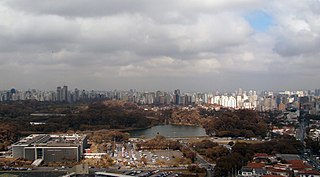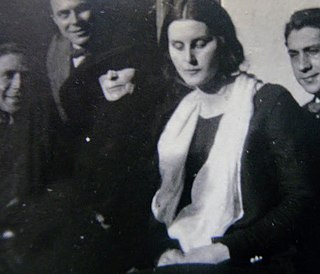
Ludovisi is the 16th rione of Rome, Italy, identified by the initials R. XVI and located within the Municipio I.

Prince Baldassarre Boncompagni-Ludovisi, was an Italian historian of mathematics and aristocrat.
Antonio Cardile (1914–1986) was an Italian painter belonging to the modern movement of the Scuola romana .

Enrico Coleman was an Italian painter of British nationality. He was the son of the English painter Charles Coleman and brother of the less well-known Italian painter Francesco Coleman. He painted, in oils and in watercolours, the landscapes of the Campagna Romana and the Agro Pontino; he was a collector, grower and painter of orchids. Because of his supposedly Oriental air, he was known to his friends as "Il Birmano", the Burmese.

Galileo Chini was an Italian decorator, designer, painter, and potter.

Ferruccio Bortoluzzi was an Italian modern painter, he was one of the founders of the Centro di Unità della Cultura L'Arco together with venetian artists and writers.

Piergiorgio Colautti is a modern Italian painter and sculptor, who lived and worked in Rome. He is known for his own distinctive style, sometimes labelled "Hyperfuturism", in which figurative elements are enmeshed and submerged by symbols reflecting a cold and modern technological world.

Giuseppe Amisani was an Italian portrait painter of the Belle Époque.
Nikola Prsendic is a contemporary artist and painter, currently based in Belgrade, Serbia.
Ernesto Treccani was a visual artist, writer and political activist.

Boncompagni Ludovisi Decorative Arts Museum, Rome, is the Decorative Arts Museum of the National Gallery of Modern Art of Rome. The Museum is located at Via Boncompagni, 18, near the elegant and historical Via Veneto.

Museu Afro Brasil is a history, artistic and ethnographic museum dedicated to the research, preservation, and exhibition of objects and works related to the cultural sphere of black people in Brazil. It is a public institution held by the Secretariat for Culture of the São Paulo State and managed by the Museu Afro Brasil Association. The museum is located in Ibirapuera Park, a major urban park in São Paulo. The Manoel da Nóbrega Pavilion, designed by Oscar Niemeyer in 1959, houses the Museum. It holds around 6 thousands items and pieces including paintings, sculptures, photos, documents, and archives created between the 15th Century and the present day. The aggregation of pieces includes many works of the African and Afro-Brazilian cultural spheres, ranging from subjects and topics such as religion, labor, and art to the African Diaspora and slavery, whilst registering and affirming the historical trajectory and the African influences in the construction of the Brazilian society. The Museum also offers a diverse range of cultural and didactic activities, temporary expositions, and contains a theater and a specialized library.

Museum of Art of the Parliament of São Paulo is a contemporary art museum housed in the Palácio 9 de Julho, the Legislative Assembly of São Paulo house. The Palace is located in south of the city, opposite to the Ibirapuera Park.

The Polo Museale del Lazio is an office of Italy's Ministry of Cultural Heritage. Its seat is in Rome in the Palazzo Venezia.
Gabriele Simongini is an Italian art historian and art critic. Simongini is a professor at the Accademia di Belle Arti di Roma. Art critic of the newspaper Il Tempo and essayist. In particular deals with research in Italian abstract art.

Palma Bucarelli was an Italian art historian, curator and administrator, mostly known for her tenure as director of the Galleria Nazionale d'Arte Moderna (GNAM) in Rome from 1942 to 1975.

Vito Bongiorno is an Italian artist known for making art out of charcoal.

Elisa Johanne Rosa Maria Boglino was a Danish-Italian painter, active in Denmark and Italy.
Elisa Montessori is an Italian painter.

Cristoforo Russo (1978-2024) is an Italian contemporary painter.















